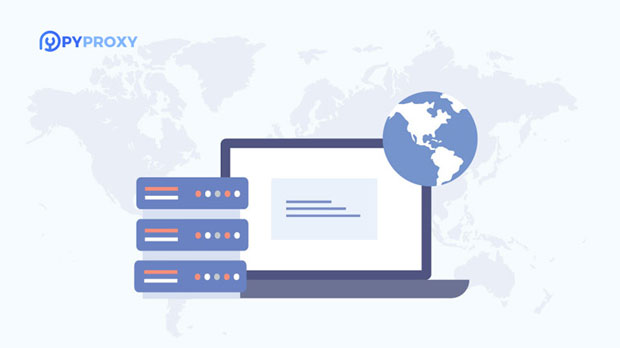When it comes to evaluating the stability of proxy servers, PYPROXY and Squid Proxy are two significant contenders in the market. Stability, in this context, refers to a proxy’s ability to consistently maintain a secure and uninterrupted connection, even under heavy load or network instability. While both PyProxy and Squid Proxy are well-regarded for their functionalities, they each have unique strengths and weaknesses that affect their performance in different environments. This article will delve into a detailed comparison between the two, examining factors such as performance under load, error handling, scalability, and fault tolerance, to determine which of the two offers superior stability. Overview of PyProxy and Squid ProxyBefore comparing their stability, it is essential to understand what PyProxy and Squid Proxy are and how they function. PyProxy is a Python-based proxy server that offers flexibility and simplicity in configuration. It is widely favored for its lightweight nature and ease of use, especially in smaller or specialized environments.On the other hand, Squid Proxy is a more traditional and widely used proxy solution, known for its performance and reliability, especially in large-scale enterprise environments. Squid supports a wide range of protocols and provides advanced features such as caching, access control, and authentication, making it a go-to choice for organizations requiring high performance and customization.Stability of PyProxyPyProxy’s stability largely depends on how it is deployed and configured. Since PyProxy is based on Python, its performance is heavily influenced by the underlying Python environment and libraries. In terms of stability, PyProxy tends to perform well in controlled and less demanding environments, such as testing or small-scale deployments.However, under heavy traffic or in complex network configurations, PyProxy may struggle with handling high concurrency, as Python’s Global Interpreter Lock (GIL) can become a limiting factor. This makes PyProxy less stable when it comes to environments where high throughput and concurrency are crucial. Additionally, being built on Python, PyProxy may face occasional performance degradation under extended usage, especially when it handles large-scale data or long-running processes. These factors could result in slower response times or even service interruptions if not properly managed.Stability of Squid ProxySquid Proxy, known for its robustness and maturity, is widely considered one of the most stable proxy servers available. With its long history in handling high volumes of traffic, Squid has been optimized for large-scale environments. It is equipped with advanced caching mechanisms, load balancing, and traffic management capabilities that contribute significantly to its stability.In high-demand environments, Squid’s ability to distribute requests evenly across multiple servers ensures that the network can maintain a high level of performance without significant slowdowns. Squid’s internal fault tolerance mechanisms, such as failover and load balancing, make it capable of handling network disruptions without causing long-lasting effects. Additionally, Squid is highly customizable, allowing administrators to fine-tune performance and fault tolerance features to suit specific needs, further enhancing its stability.Performance Under LoadThe performance of a proxy server under load is a critical factor in determining its stability. In a high-traffic situation, a proxy needs to handle multiple simultaneous connections without crashing or losing performance.PyProxy, being a lightweight Python-based solution, is better suited for handling lower traffic volumes. When subjected to high loads, it may experience delays or even crashes due to Python’s limitations in handling multiple threads. Moreover, PyProxy’s reliance on Python libraries for concurrency management can become a bottleneck if many requests need to be processed simultaneously. This limits its performance under load and can lead to decreased stability over time.Squid Proxy, however, has been built with high load handling in mind. It uses efficient networking protocols and supports multi-threading and asynchronous processing, which allow it to scale better under heavy traffic. The system can handle large numbers of simultaneous connections and manage high traffic efficiently. Squid’s performance remains stable even as the load increases, making it a more robust option for enterprises and high-traffic networks.Error Handling and Fault ToleranceA stable proxy server must be able to recover gracefully from errors and disruptions. This is an area where Squid Proxy excels. Squid is known for its sophisticated error handling mechanisms. In the event of network failures or server issues, Squid can quickly detect and redirect traffic to a backup server, ensuring minimal downtime. Its failover capabilities and load balancing ensure that even if one node fails, others can take over the load seamlessly. This level of fault tolerance makes Squid highly reliable in mission-critical environments where uptime is essential.PyProxy, while functional in smaller setups, lacks the comprehensive error handling and fault tolerance mechanisms that Squid offers. PyProxy may require manual intervention in case of network disruptions or server failures. As a result, it is not as resilient as Squid when faced with unexpected errors or failures, which can impact its stability in larger-scale or more dynamic environments.Scalability and CustomizationScalability is a vital factor when considering stability, especially for businesses expecting growth or handling fluctuating traffic demands. Squid Proxy shines in this aspect due to its high level of scalability. Squid supports distributed configurations, where multiple proxy servers work together to handle larger volumes of traffic. This makes Squid highly adaptable to changing traffic loads, providing consistent performance as the network grows.Squid’s customization options also contribute to its stability. Administrators can configure caching, routing, access control, and other features to suit specific requirements, improving performance under various conditions.PyProxy, on the other hand, may not offer the same scalability as Squid. While it is relatively easy to set up and configure for smaller applications, PyProxy’s lack of distributed support and advanced load balancing features limits its ability to scale effectively. For organizations looking to scale their network infrastructure, PyProxy may not offer the necessary tools to maintain stability under increased load.Conclusion: Which Proxy is More Stable?In conclusion, when it comes to stability, Squid Proxy is the more reliable option, particularly for high-traffic and large-scale environments. Its robust error handling, fault tolerance, and ability to scale efficiently make it a highly stable choice for businesses that require continuous uptime and performance.While PyProxy can offer satisfactory stability in smaller or less demanding environments, its performance under high load, error handling, and scalability limitations make it less suited for high-demand applications. As such, for organizations prioritizing stability, Squid Proxy is the clear winner.
Aug 01, 2025



































































